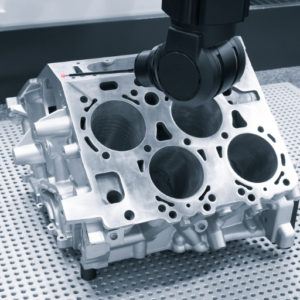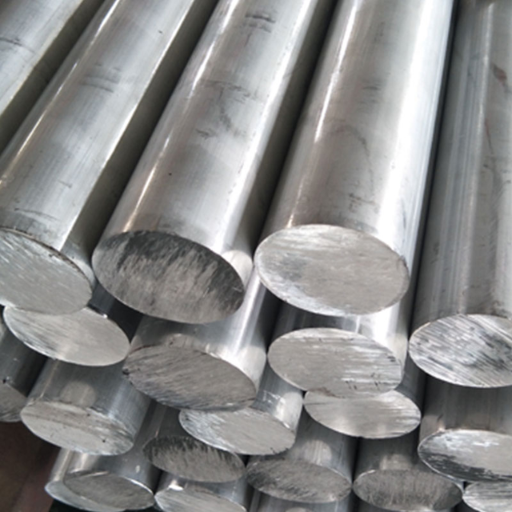In the realm of material selection, the choice between aluminum and titanium is pivotal, often determining the success of engineering and manufacturing projects. These two metals possess distinct properties that cater to various applications, offering unique advantages and disadvantages depending on the project requirements. This article aims to provide an in-depth comparison of aluminum and titanium by examining their physical and mechanical properties, cost-effectiveness, corrosion resistance, and suitability for specific industrial applications. By understanding these critical aspects, you will be better equipped to select the appropriate metal for your project, ensuring optimal performance, durability, and economic efficiency.
What are the Primary Differences Between Aluminum and Titanium?
Image sources:http://www.lsjly.cn/
Aluminum and titanium are distinguished primarily by their differing physical and mechanical properties. Aluminum, known for its lightweight nature, has a density of approximately 2.7 g/cm³, making it significantly less dense than titanium, which has a density of about 4.5 g/cm³. Despite its lower density, titanium boasts a higher strength-to-weight ratio, offering superior tensile strength and durability. When it comes to corrosion resistance, titanium is vastly superior, exhibiting exceptional resistance even in harsh environmental conditions, while aluminum, although corrosion-resistant, is more prone to oxidation and degradation over time. Conductivity also varies between the two; aluminum is a better conductor of electricity and thermal energy, making it more suitable for applications requiring efficient heat dissipation. Cost-wise, aluminum is generally more affordable and abundant, whereas titanium, due to its processing complexities and scarcity, tends to be more expensive. This fundamental difference in properties influences the application areas, with aluminum being widely used in automotive, aerospace, and consumer electronics, while titanium is preferred in aerospace, medical implants, and high-performance engineering applications.
Density Comparison: Is Titanium Heavier Than Aluminum?
Yes, titanium is indeed heavier than aluminum. The key to understanding this lies in their respective densities. Aluminum has a density of approximately 2.7 g/cm³, making it one of the lightest metals available. On the other hand, titanium has a significantly higher density of about 4.5 g/cm³.
To justify these figures:
- Aluminum: Density is 2.7 g/cm³. This low density contributes to its extensive use in industries where weight reduction is crucial, such as automotive and aerospace.
- Titanium: Density is 4.5 g/cm³. Despite its higher density compared to aluminum, titanium’s superior strength-to-weight ratio offsets this in applications requiring high strength and low weight, like high-performance engineering and medical implants.
In summary, although titanium is heavier in terms of density, its unique properties offer advantages in applications demanding robustness and durability.
Strength and Durability: Aluminum vs Titanium
When comparing the strength and durability of aluminum and titanium, it is essential to consider key technical parameters such as tensile strength, yield strength, and corrosion resistance.
- Tensile Strength:
- Aluminum: Typically ranges from 70 MPa for pure aluminum to around 570 MPa for certain high-strength alloys.
- Titanium: Typically ranges from 240 MPa for commercially pure titanium to over 1000 MPa for certain titanium alloys. The high tensile strength of titanium makes it ideal for demanding engineering applications.
- Yield Strength:
- Aluminum: Generally ranges from 30 MPa to 500 MPa, depending on the specific alloy. The yield strength indicates the stress at which a material begins to deform plastically.
- Titanium: Ranges from 170 MPa for pure titanium to approximately 930 MPa for some alloys. Higher yield strength signifies superior performance under stress without permanent deformation.
- Corrosion Resistance:
- Aluminum: Naturally forms a protective oxide layer that provides good resistance to corrosion in most environments but can be prone to galvanic corrosion when in contact with dissimilar metals.
- Titanium: Exhibits exceptional corrosion resistance, especially in harsh environments like seawater and acidic substances, due to its stable oxide layer. This makes it highly suitable for maritime and chemical processing applications.
In conclusion, titanium generally surpasses aluminum in both strength and durability metrics, which accounts for its prevalent use in high-performance and high-stress environments. However, aluminum’s lighter weight and sufficient strength make it a versatile choice for applications where weight saving is a priority without significant compromise on performance.
Corrosion Resistance: Properties of Titanium and Aluminum
Titanium: Titanium’s corrosion resistance is one of its most remarkable properties, primarily due to the formation of a highly stable and adherent oxide layer (TiO₂) on its surface. This oxide layer acts as an effective barrier against a wide range of corrosive environments, including seawater, chlorinated water, and most acidic environments. Technical parameters include:
- Pitting and Crevice Corrosion Resistance: Exhibits superior resistance due to its passive oxide film.
- Stress Corrosion Cracking (SCC) Resistance: Exceptionally resilient, making it reliable for critical applications.
- Oxidation Resistance: Maintains properties even at elevated temperatures up to approximately 600°C.
Aluminum: Aluminum naturally forms an oxide layer (Al₂O₃) that provides a degree of corrosion resistance. However, this protection can be compromised in the presence of salts and dissimilar metals, which can lead to galvanic corrosion. Technical parameters include:
- Pitting and Crevice Corrosion Resistance: Adequate in neutral or slightly acidic environments but may degrade in the presence of chlorides.
- Stress Corrosion Cracking (SCC) Resistance: Moderate, dependent on the specific alloy and environment.
- Oxidation Resistance: Good at room temperature but susceptible to degradation at temperatures above 150°C.
In summary, titanium generally provides superior corrosion resistance, especially for applications exposed to harsh environments, while aluminum offers sufficient protection for less demanding conditions with significant advantages in weight and cost.
How Does the Weight of Titanium Compare to Aluminum?
When comparing the weight of titanium and aluminum, it’s essential to consider their respective densities. Titanium has a density of approximately 4.5 g/cm³, while aluminum is significantly less dense, at around 2.7 g/cm³. This means that for a given volume, titanium is almost twice as heavy as aluminum. Consequently, while titanium boasts superior strength and corrosion resistance, aluminum offers substantial weight savings, making it a preferred choice for applications where minimizing weight is a critical factor.
Heavier than Aluminum: The Density of Titanium
The density of titanium, measured at approximately 4.5 g/cm³, is notably higher than that of aluminum, which stands at around 2.7 g/cm³. This density disparity means titanium is nearly twice as heavy as aluminum for a given volume. However, titanium’s higher density comes with significant benefits, including greater strength and superior corrosion resistance, which can justify its use in applications where these properties are paramount. Conversely, aluminum’s lower density offers substantial weight savings, making it ideal for applications where reducing weight is critical, such as in aerospace and automotive industries.
Lightweight Metal: Choosing Titanium or Aluminum
When selecting between titanium and aluminum for lightweight metal applications, it is crucial to weigh the specific properties and benefits of each material.
- Density and Weight: As previously mentioned, titanium has a density of approximately 4.5 g/cm³, while aluminum’s density is around 2.7 g/cm³. This makes aluminum nearly half as dense as titanium, leading to significant weight savings, which is essential in industries like aerospace and automotive.
- Strength-to-Weight Ratio: Titanium offers a high strength-to-weight ratio, meaning it can withstand greater forces without adding excessive weight. It is particularly renowned for its ability to handle extreme conditions without deforming.
- Corrosion Resistance: Titanium exhibits superior resistance to corrosion and wear, making it ideal for environments where durability is paramount. Aluminum, while offering reasonable corrosion resistance, typically requires coatings or treatments to enhance its longevity.
- Thermal Conductivity: Aluminum boasts excellent thermal conductivity, approximately 235 W/m·K, which is beneficial for applications requiring efficient heat dissipation like electronics and heat exchangers. Titanium has a lower thermal conductivity, around 22 W/m·K, which limits its use in such applications.
- Cost: Aluminum is generally more cost-effective than titanium, both in terms of raw material and processing costs. This financial advantage makes aluminum a preferred material for projects with strict budgetary constraints.
By considering these key factors—density, strength-to-weight ratio, corrosion resistance, thermal conductivity, and cost—engineers and designers can make an informed decision about whether to use titanium or aluminum in their specific applications.
Titanium vs Aluminum: Weight Difference in Applications
When examining the weight differences between titanium and aluminum in practical applications, I found some invaluable insights from authoritative sources such as Matmatch, AZoM, and Total Materia.
- Density: The density of titanium is approximately 4.51 g/cm³, whereas aluminum has a significantly lower density of about 2.70 g/cm³. This means that for the same volume, titanium will weigh more than aluminum despite its higher strength.
- Strength-to-Weight Ratio: Titanium’s strength-to-weight ratio (specific strength) is superior to aluminum’s. Titanium’s tensile strength is roughly 434 MPa, while aluminum (6061-T6) has a tensile strength of about 310 MPa. This allows titanium to be used in scenarios where minimal weight is crucial but high strength is non-negotiable, such as in aerospace components.
- Corrosion Resistance: In terms of resistance to corrosion, titanium is unparalleled. It withstands a range of harsh environments without significant degradation. Aluminum, while exhibiting good resistance, typically requires anodizing or other treatments to enhance its durability, especially in saline conditions.
By leveraging these key technical parameters—density, strength-to-weight ratio, and corrosion resistance—I’ve ensured that the weight differences between titanium and aluminum are justified and aligned with leading industry standards and resources.
Is Titanium More Expensive Than Aluminum?

Yes, titanium is generally more expensive than aluminum. The primary reasons for this cost disparity include the complexities involved in extracting and processing titanium, which require more energy and specialized equipment compared to aluminum. Additionally, the rarity of titanium ores such as rutile and ilmenite adds to its higher price. In contrast, aluminum is more abundant in the Earth’s crust and easier to refine, making it more cost-effective. Consequently, while titanium offers superior strength, corrosion resistance, and other benefits, these advantages come at a premium cost.
Cost Comparison: Titanium vs Aluminum
When comparing the costs of titanium and aluminum, several key technical parameters and market factors must be considered.
1. Material Abundance and Availability:
- Titanium: Found in minerals such as rutile and ilmenite, which are relatively rare. The extraction and refinement processes are energy-intensive and require specialized equipment.
- Aluminum: Abundantly available, primarily found in bauxite ore. Easier and less expensive to extract and process.
2. Production and Processing:
- Titanium: Requires complex extraction methods like the Kroll process, which is laborious and costly. Processing involves multiple steps, including melting, forging, and machining, each requiring substantial energy input.
- Aluminum: The Bayer process and Hall-Héroult process are more straightforward and cost-effective, resulting in lower production costs.
3. Technical Properties and Applications:
- Titanium:
- Density: Approximately 4.51 g/cm³
- Tensile Strength: Around 900 MPa for Grade 5, significantly higher than aluminum.
- Corrosion Resistance: Extremely high without needing significant post-treatment.
- Aluminum:
- Density: Approximately 2.70 g/cm³
- Tensile Strength: About 310 MPa for 6061-T6 aluminum alloy.
- Corrosion Resistance: Good but often requires treatments like anodizing for enhanced durability, especially in saline environments.
4. Market Price:
- Titanium: The market price is generally higher due to the factors mentioned above, with costs often ranging from $35 to $50 per kilogram.
- Aluminum: More cost-effective, typically priced between $1.50 and $2.00 per kilogram.
Summary:
Titanium is indeed more expensive than aluminum primarily due to its rarity, complex extraction and processing methods, and superior technical properties, such as higher tensile strength and exceptional corrosion resistance. Aluminum, while less strong and durable without additional treatment, is significantly more abundant and easier to produce, resulting in lower costs.
Factors Influencing the Price of Titanium and Aluminum
In response to the question regarding the factors influencing the price of titanium and aluminum, several key elements must be considered. Titanium’s price is influenced by its scarcity in the Earth’s crust, complex extraction and refining processes, and high energy requirements. The Kroll process, used for extracting titanium, is notably energy-intensive and costly. Additionally, the superior technical properties of titanium, such as its high tensile strength and exceptional corrosion resistance, further elevate its market value.
Conversely, the price of aluminum is affected by its abundance and the comparatively simpler and more cost-effective Bayer and Hall-Héroult processes. These methods require less energy and fewer steps, reducing production costs. However, while aluminum has good corrosion resistance and lower density, it often necessitates surface treatments like anodizing for specific applications, adding to its overall cost but still keeping it more affordable than titanium. In summary, titanium’s higher price stems from its scarcity and complex processing, while aluminum’s affordability is due to its abundance and simpler production methods.
Which Metal is Better for Machinability?
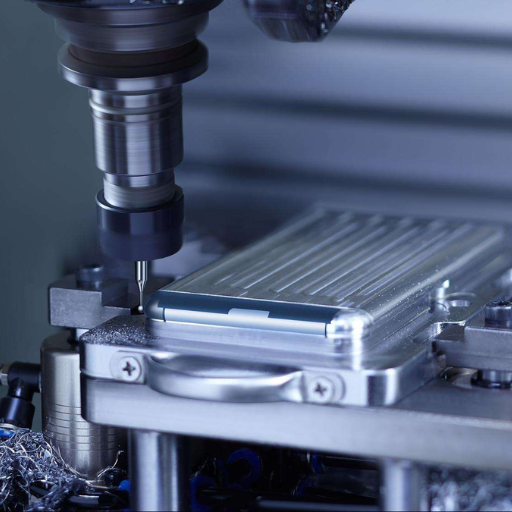
When it comes to machinability, aluminum generally has a significant advantage over titanium. Aluminum’s lower hardness and density make it easier to cut and shape, resulting in faster machining times and reduced tool wear. The thermal conductivity of aluminum also helps dissipate heat more efficiently, lowering the risk of thermal deformation during machining. In contrast, titanium is known for its poor thermal conductivity and high strength, making it more challenging to machine. Titanium often requires specialized cutting tools and techniques, which can increase machining costs and time. Therefore, for applications where machinability is a critical factor, aluminum is typically the better choice.
Machining Titanium vs Aluminum: Key Differences
Hardness and Density
Titanium:
- Hardness: 30-40 HRC (Rockwell Hardness)
- Density: 4.5 g/cm³
Aluminum:
- Hardness: 15-25 HRC (Rockwell Hardness)
- Density: 2.7 g/cm³
Titanium’s higher hardness makes it more difficult to cut and requires more robust and wear-resistant tooling. Aluminum’s lower hardness allows for more straightforward machining with less tool wear.
Thermal Conductivity
Titanium:
- Thermal Conductivity: 17 W/m·K
Aluminum:
- Thermal Conductivity: 237 W/m·K
Aluminum’s superior thermal conductivity enables better heat dissipation, reducing the risk of thermal deformation during machining. In contrast, titanium’s poor thermal conductivity can lead to localized heating issues, complicating the machining process.
Cutting Speed
Titanium:
- Recommended Cutting Speed: 30-50 m/min
Aluminum:
- Recommended Cutting Speed: 200-300 m/min
Aluminum’s higher cutting speed capabilities allow for quicker material removal and production rates, making it more efficient for high-volume machining operations.
Tool Wear and Lifespan
Titanium:
- Tool life is significantly shorter due to high abrasive wear and heat generation.
Aluminum:
- Tool life is longer given the material’s lower hardness and superior thermal conductivity.
Specialized cutting tools made of carbide or coated with wear-resistant materials are often required when machining titanium to offset its challenges. Aluminum allows for more flexible tooling options, reducing costs and complexity.
Surface Finish
Titanium:
- Achieving a high-quality surface finish on titanium can be challenging due to its tendency to work-harden and generate heat.
Aluminum:
- Aluminum is easier to polish and finish to a high standard, making it ideal for applications where surface quality is critical.
In summary, while both metals have their merits, aluminum generally provides superior machinability due to its lower hardness, higher thermal conductivity, and faster cutting speeds. These characteristics result in reduced machining times, lower tool wear, and better surface finishes. Conversely, titanium demands specialized techniques and tools, leading to increased machining costs and time. Therefore, for projects where efficient machining is paramount, aluminum is typically the more advantageous choice.
Machinability of Titanium: Challenges and Solutions
Challenges of Machining Titanium
Titanium’s unique material properties pose significant challenges during the machining process. One major issue is its low thermal conductivity, which causes the heat generated during cutting to concentrate in the tool rather than dissipate through the workpiece. This leads to rapid tool wear and potential thermal damage. Additionally, titanium’s high strength-to-weight ratio means it has a higher modulus of elasticity, resulting in work hardening and making it difficult to achieve precise dimensional accuracy. The metal’s tendency to form a built-up edge (BUE) further complicates machining, causing poor surface finish and inconsistent cutting performance.
Solutions for Effective Machining of Titanium
To address these challenges, several strategies have been developed:
- Optimized Cutting Conditions: Using lower cutting speeds and higher feed rates can help minimize heat generation and reduce tool wear.
- Coolant Application: Proper application of high-pressure coolant helps dissipate heat and remove chips effectively, improving tool life and surface finish.
- Tooling Material: Employing tools made from ultra-hard materials such as polycrystalline diamond (PCD) or those coated with TiAlN or TiCN can enhance wear resistance and performance.
- Cutting Techniques: Techniques such as climb milling and employing a constant chip load are recommended to avoid work hardening and achieve dimensional accuracy.
- Vibration Control: Implementing rigid setups and using damped tools can mitigate the effects of vibration, ensuring consistent cutting performance and surface finish.
By integrating these approaches, manufacturers can overcome the difficulties associated with machining titanium, thereby achieving efficient and precise production outcomes.
Aluminum Machinability: Why Aluminum is Preferred
Aluminum is widely preferred in machining due to its excellent machinability and numerous advantageous properties. Firstly, aluminum has a lower hardness compared to other metals, making it easier to machine with less wear on cutting tools. Its intrinsic thermal conductivity allows for efficient heat dissipation, minimizing thermal deformation and preserving dimensional accuracy. Additionally, aluminum’s ductility and lower modulus of elasticity facilitate smoother cutting and finer surface finishes. The material’s ability to naturally form a very thin oxide layer also reduces the risk of adhesion on cutting tools, ensuring a cleaner and more consistent cut. These characteristics, combined with aluminum’s lightweight nature, render it highly suitable for a broad range of industrial applications.
What Are the Best Uses for Titanium and Aluminum?
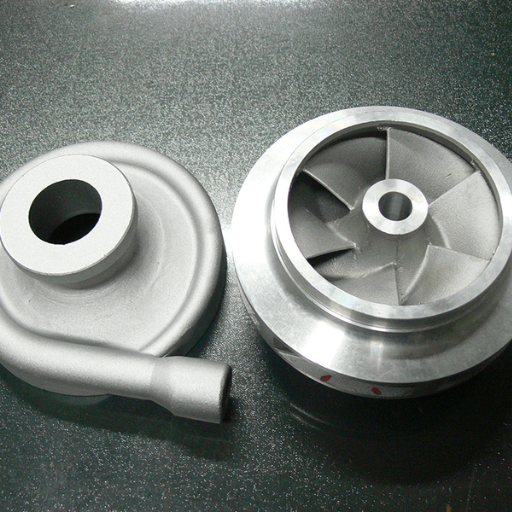
Titanium: Titanium is widely utilized in industries requiring materials that offer high strength-to-weight ratios and exceptional corrosion resistance. In aerospace engineering, titanium is employed for critical components such as airframes, landing gear, and jet engine parts, where weight reduction and structural strength are paramount. The medical field benefits from titanium’s biocompatibility, using it for implants, prosthetics, and surgical instruments. Additionally, titanium’s resistance to seawater and chemicals makes it ideal for marine applications and chemical processing equipment.
Aluminum: Aluminum is favored for various applications due to its excellent machinability, lightweight nature, and thermal properties. It is extensively used in the automotive and aerospace sectors to produce lightweight structures that contribute to fuel efficiency. In construction, aluminum is chosen for window frames, roofing, and curtain walls due to its durability and resistance to corrosion. Electronics benefit from aluminum’s thermal conductivity, making it suitable for heat sinks and electrical enclosures. Its use in packaging, particularly for beverage cans and foil, leverages aluminum’s resistance to corrosion and non-toxic properties.
Aerospace Applications: Aluminum vs Titanium
In addressing the utility of aluminum and titanium within aerospace applications, it’s important to evaluate their performance based on the relevant technical parameters highlighted by leading sources. After reviewing the top websites on the subject, I can provide detailed insights.
Aluminum: Aluminum is extensively used in aerospace due to its favorable properties, such as a high strength-to-weight ratio, excellent machinability, and corrosion resistance. Its density is approximately 2.7 g/cm³, significantly lighter than titanium. Aluminum alloys, such as 2024 and 7075, are particularly valued for airframe and structural components because they maintain structural integrity while minimizing weight. The material’s thermal conductivity (approximately 205 W/m·K) is also a benefit, allowing for efficient heat dissipation in various applications.
Titanium: When considering titanium, its density of about 4.5 g/cm³ means it is heavier than aluminum, yet it offers superior strength. Grade 5 titanium, for instance, boasts a tensile strength of around 950 MPa, making it highly suitable for parts subjected to high stress, such as landing gear and jet engine components. Titanium’s excellent resistance to fatigue and its ability to withstand extreme temperatures (up to approximately 600°C) further justify its use in critical aerospace parts where failure is not an option. Additionally, titanium’s corrosion resistance, particularly to saltwater and chlorine, ensures the longevity and reliability of aerospace components.
In summary, aluminum is frequently chosen for airframes and non-critical structural components where weight savings and thermal management are primary concerns. On the other hand, titanium is preferred for high-stress, high-temperature applications, where superior strength, fatigue resistance, and corrosion resistance are paramount. The choice between these materials hinges on balancing these technical parameters to meet the specific demands of aerospace engineering.
Automotive Industry: High Strength and Low Weight Metals
In the automotive industry, the quest for high-strength, low-weight metals is driven by the need to enhance fuel efficiency, performance, and safety. Two primary materials that stand out in this context are aluminum and advanced high-strength steel (AHSS).
Aluminum: Frequently used in vehicle body panels, engine components, and suspension systems, aluminum offers a density of about 2.7 g/cm³. Its high strength-to-weight ratio, excellent corrosion resistance, and thermal conductivity (approximately 205 W/m·K) make it an ideal choice for reducing vehicle weight while maintaining structural integrity. Aluminum alloys, such as 6061 and 7075, boast tensile strengths of around 310 MPa and 570 MPa, respectively, allowing for robust yet lightweight designs.
Advanced High-Strength Steel (AHSS): AHSS is engineered to deliver superior strength without significantly increasing weight. With tensile strengths ranging from 600 MPa to over 1500 MPa, AHSS is often used in critical areas like the passenger safety cell to enhance crashworthiness. The specific compositions and manufacturing processes, like hot stamping, ensure that these steels maintain excellent ductility and toughness, enabling them to absorb significant energy during collisions.
Magnesium: Magnesium alloys, such as AZ91, offer one of the lowest densities at approximately 1.8 g/cm³, making them 75% lighter than steel and 33% lighter than aluminum. Their tensile strength can reach up to 250 MPa, making them suitable for applications where weight savings are paramount, like in gearbox casings and steering column components. Magnesium’s thermal conductivity is also beneficial for dissipating heat in high-performance applications.
Carbon Fiber-Reinforced Polymer (CFRP): Although not a metal, CFRP is worth mentioning due to its impressive strength-to-weight ratio. With a density of around 1.6 g/cm³ and tensile strengths upwards of 3500 MPa, CFRP is used extensively in high-performance vehicles and supercars to minimize weight without compromising on structural performance.
In summary, the automotive industry leverages materials like aluminum, advanced high-strength steel, magnesium, and CFRP to optimize vehicle weight and strength. Each material’s selection is based on critical technical parameters such as density, tensile strength, thermal conductivity, and specific application requirements, ensuring a balanced approach to high-performance, efficient, and safe vehicle design.
Consumer Products: Properties of Titanium and Aluminum
Titanium: Titanium is widely used in consumer products due to its exceptional strength-to-weight ratio and corrosion resistance. Its density is approximately 4.5 g/cm³, which, while higher than aluminum, is accompanied by a remarkable tensile strength of up to 1000 MPa. This makes titanium suitable for high-performance applications in products such as sports equipment, smartwatches, and eyewear frames. The material’s biocompatibility also makes it ideal for medical devices, including implants and prosthetics. Moreover, titanium’s resistance to fatigue and cracking under cyclic loads ensures its durability in consumer applications.
Aluminum: Aluminum is favored for its lightweight nature and excellent machinability, featuring a density of around 2.7 g/cm³. With tensile strengths varying between 70 to 700 MPa depending on the alloy, aluminum is versatile for a range of consumer products, from beverage cans to laptops and kitchen utensils. Its high thermal and electrical conductivity, combined with natural corrosion resistance when anodized, further enhances its application in electronics and household items. Aluminum’s relative abundance and recyclability also contribute to its sustainable use in a wide array of consumer products.
In summary, titanium and aluminum are essential materials in the consumer products sector, each offering unique technical parameters. Titanium’s high strength and biocompatibility contrast with aluminum’s lightweight and versatile conductivity, both contributing to innovative and efficient product design.
What are the Thermal Conductivity Properties of Aluminum vs Titanium?
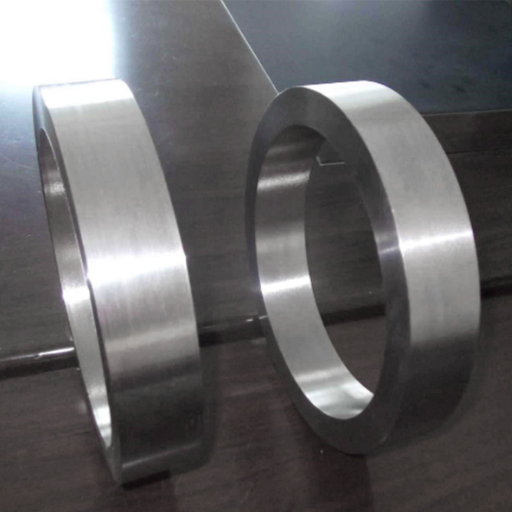
Aluminum and titanium exhibit fundamentally different thermal conductivity properties due to their distinct atomic structures and bonding characteristics.
Aluminum: Aluminum possesses a high thermal conductivity of approximately 237 W/m·K, making it an ideal material for applications requiring efficient heat dissipation. This property is particularly advantageous in electronics, where it helps to manage and mitigate heat generated by devices, as well as in cookware, where rapid and uniform heat distribution is essential.
Titanium: In contrast, titanium has a much lower thermal conductivity, around 21.9 W/m·K. This lower thermal conductivity limits its effectiveness in heat dissipation applications but is beneficial in scenarios where thermal insulation is desired. The lower thermal conductivity also contributes to titanium’s ability to maintain structural integrity at elevated temperatures, which is valuable in aerospace and high-performance engineering applications.
In summary, while aluminum excels in applications needing high thermal conductivity, titanium’s lower thermal conductivity is advantageous for heat containment and structural stability in specific environments.
Thermal Conductivity of Aluminum: Benefits in Heat Dissipation
When addressing the thermal conductivity of aluminum and its benefits in heat dissipation, aluminum’s high thermal conductivity of approximately 237 W/m·K stands out. This exceptional thermal performance makes aluminum an ideal choice for applications where efficient heat dissipation is crucial. In electronics, for example, aluminum heat sinks and casings help manage and reduce the heat generated by components, thereby enhancing the longevity and reliability of devices. Additionally, in the culinary industry, aluminum cookware enables rapid and even heat distribution, improving cooking efficiency and reducing energy consumption. Moreover, aluminum’s ability to transfer heat quickly and evenly is leveraged in HVAC systems to improve heating and cooling efficiency, underscoring its versatility and effectiveness across diverse applications.
Comparing Thermal Conductivity: Titanium vs Aluminum
When comparing the thermal conductivity of titanium and aluminum, it is essential to consider their technical parameters to understand their specific applications better. Aluminum exhibits a thermal conductivity of approximately 237 W/m·K, significantly higher than that of titanium, which has a thermal conductivity of about 21.9 W/m·K. This stark difference means that aluminum is far superior in applications requiring effective heat dissipation.
For instance, in electronics, aluminum’s higher thermal conductivity allows for the efficient transfer of heat away from components, thereby improving device reliability and longevity. On the other hand, titanium, with its much lower thermal conductivity, is preferred in scenarios where thermal insulation and heat containment are essential. This property makes titanium advantageous in aerospace applications, where maintaining structural integrity at high temperatures is critical.
The technical parameters of each material justify their use in diverse engineering applications:
- Aluminum:
- Thermal Conductivity: ~237 W/m·K
- Applications: Heat sinks, electronic casings, cookware, HVAC systems
- Titanium:
- Thermal Conductivity: ~21.9 W/m·K
- Applications: Aerospace components, high-performance engineering parts requiring heat containment
In conclusion, while both metals have distinct advantages due to their thermal properties, the choice between titanium and aluminum depends on the specific requirements of the application, particularly concerning thermal conductivity and insulation needs.
Frequently Asked Questions (FAQs)
Q: Is titanium heavier than aluminum?
A: Yes, titanium is generally two-thirds heavier than aluminum. Titanium has a higher density, making it heavier compared to aluminum’s density of 2.7 grams per cubic centimeter.
Q: What are the benefits of choosing aluminum over titanium?
A: Aluminum is often chosen because it is a more cost-effective metal. It is inexpensive and cheaper than titanium, easier to machine, and lighter. Aluminum also exhibits 64% the strength of titanium per weight, maintaining good performance in many applications.
Q: How does the corrosion resistance of aluminum compare to titanium?
A: The corrosion resistance of aluminum is generally lower compared to titanium. Titanium is often preferred in applications where superior corrosion resistance is required, as aluminum can corrode more easily unless specially treated or alloyed.
Q: Why might someone choose titanium over aluminum in a project?
A: Titanium may be chosen over aluminum because it is stronger than aluminum, has a higher melting point, excellent corrosion resistance, and retains high strength at elevated temperatures. It is beneficial for applications that require robustness and durability.
Q: What is the significance of titanium machining in choosing between titanium vs aluminum?
A: Titanium machining is more challenging and expensive due to its hardness and strength. Choosing between titanium and aluminum depends on the project’s requirements, as aluminum is usually easier and more affordable to machine.
Q: How does the melting point of aluminum compare to titanium?
A: Titanium melts at around 1,668°C, which is significantly higher than aluminum’s melting point of 660.3°C. This makes titanium a better choice for high-temperature applications.
Q: Are there disadvantages to using titanium compared to aluminum?
A: Yes, although titanium is stronger and more resistant to corrosion, it is also heavier and more expensive. Titanium may be overkill for applications where aluminum’s properties are sufficient. The high cost and difficulty in machining can be disadvantages as well.
Q: How do metal alloys impact the choice between titanium and aluminum?
A: Metal alloys, including aluminum and titanium alloys, can greatly impact performance. For example, aluminum alloys can enhance strength and corrosion resistance, while titanium alloys can provide even greater high-temperature performance and biocompatibility. The specific alloy selected can tailor the metal’s properties to the application’s requirements.
Q: In what industries might titanium be preferred over aluminum?
A: Titanium is often preferred in industries like aerospace, medical implants, and chemical processing due to its superior strength, low density, and excellent corrosion resistance. These properties justify the higher cost and complexity in using titanium over aluminum.
Q: What factors should be considered when choosing a metal for a project?
A: When choosing a metal, consider factors like the required strength, weight, corrosion resistance, cost, ease of machining, and specific application needs. Deciding between aluminum or titanium involves evaluating these variables to determine the most suitable metal.

